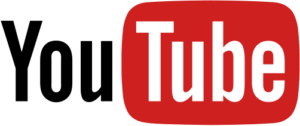Comprehensive YouTube Marketing Strategy for Lawyers
 This marketing strategy is designed specifically for lawyers who want to grow their law practice by focusing solely on videos. The goal is to attract, build trust and credibility, and retain clients by creating and promoting engaging, informative YouTube content. The strategies below will work in all practice areas including Securities, Corporate, Tax, Criminal, Personal Injury, etc. This comprehensive marketing strategy includes client testimonials, and case studies, covers different themes, and provides video ideas to get you started. The total budget for this YouTube marketing strategy is $50,000. Of course, you can customize the budget to fit your law firm’s needs. But before we get started, let’s first talk about why videos are better.
This marketing strategy is designed specifically for lawyers who want to grow their law practice by focusing solely on videos. The goal is to attract, build trust and credibility, and retain clients by creating and promoting engaging, informative YouTube content. The strategies below will work in all practice areas including Securities, Corporate, Tax, Criminal, Personal Injury, etc. This comprehensive marketing strategy includes client testimonials, and case studies, covers different themes, and provides video ideas to get you started. The total budget for this YouTube marketing strategy is $50,000. Of course, you can customize the budget to fit your law firm’s needs. But before we get started, let’s first talk about why videos are better.
1. Why Use Video?

Did you know that law firms that use video enjoy 41% more FREE web traffic from search engines than ones that don’t? 41%: view of the intense competition for users’ attention, which represents a significant contrast that law firms can not afford to ignore! Video allows you to foster connections between your existing customers and your ideal prospects with the individual lawyers at your firm. This practice can be incredibly valuable for cultivating trust and credibility among your customer base. One effective method is generating videos featuring unique team members and different services or practice areas. Video marketing is now one of the essential tools for lawyers and law firms looking to increase their reach. Why? Because videos are more engaging. Emotion equals motion (action), all purchase decisions are based on emotions. All marketing is about bonding with your ideal customer emotionally and making your customers feel good every time they see, hear, or even think about your firm’s name. You may be asking, how does marketing create this bond? Marketing makes this happen by triggering your hormones, specifically oxytocin, dopamine, and serotonin. They are often referred to as our “happy hormones.” When you’re attracted to a person, place, or thing, your brain releases dopamine, your serotonin levels increase, and oxytocin is produced. This causes you to feel a surge of positive emotions bonding you to that person, place, or thing. Think of your comfort foods, your favorite music, your favorite people, an event, or even a smell. If you’re thinking, this takes time, you’re right! Marketing takes time, but video speeds up the process by a factor of 10. Why? Because videos combine facial expressions, movements, and sounds, making it easier for your ideal customers to bond with your firm’s brand.
2. YouTube Content Strategy
Optional Content Themes
- Contracts: Explanation of different types of business contracts, common issues, and tips for safeguarding business interests.
- Executive Compensation: Detailed insights into executive compensation packages, legal considerations, and structuring strategies.
- Personal Injury: Guidance on dealing with a personal injury case.
- Miranda warning: Navigating the criminal legal system.
Content Style
- Format: Create upbeat, warm, educational videos or interviews with industry experts.
- Length: Aim for videos between 3-10 minutes to maintain viewer engagement.
- Posting Frequency: As a minimum post content weekly to build a consistent viewer base.
- Personalities: Feature the different personalities in your firm.
What Makes a Video Great
(And Beats Sex and Humor Every time)
The Four Components of a Great Story (Video)
- Identifiable characters
- Authentic emotion
- Specific details
- A significant moment
1. The Identifiable Characters
Let’s break each of these down a little more to ensure you understand them because once you master these four components, you’ll be well on your way to making great videos. The Identifiable Characters, you’ve likely seen motivational messages on the internet telling you to “be the hero of your own story.” And, yes, while the idea of a hero is a classic strategy when it comes to telling stories in business or the legal profession, I find this term to be a little confusing. The word hero suggests you need to have done something epic to have a story to tell. This couldn’t be further from the truth. What every video or story needs is much simpler than that. We don’t need a hero. We need an identifiable character, a person we care about and can relate to. To be very clear, a character is NOT a company name. It is not even a large mass of people or even a small group of people. A story needs a single or in some cases several single, separate characters we can identify with and connect to. Think of a CEO , Bill Gates, Warren Buffett, Elon Musk. We need a real everyday character. An identifiable character. Think of a single mom, a vulnerable child, an investor.
2. Authentic emotion
Another essential component is the presence of authentic emotion. Look, a list of events does not make a compelling story. The sinking of the Titanic is just an event. The people aboard the Titanic and, more importantly, the emotions the passengers had to contend with, are what make the story compelling. The emotion doesn’t have to be overly dramatic; it can be as simple or common as love or curiosity. But the emotion needs to be there. To be clear, emotion does not refer to what the watcher experiences, but rather the emotion felt by the characters in the story. Through that emotion, the receiver experiences empathy with the story. No empathy will reduce the impact of the video.
3. Specific details
The specific details component involves the use of specific, descriptive, sometimes unexpected details and imagery that are relevant to the intended to engage your ideal audience to create and draw the audience into a world that is familiar to their own. The finer the detail, the better. Using specific details in a video story is a way to demonstrate how well you know your ideal audience. Often, messages intended to be stories go wrong because they are too vague, or too general. For a story to be compelling, it should include a specific detail. Which is more compelling? Law Firm X is awesome because they got to know our needs. Law Firm X took two weeks to meet with each of our department leaders to understand the objective of each department, and how they handle compliance issues what they discovered saved each department 12 hours of work, saving our company $8700 each month. Details matter!
4. A Significant Moment
The final component of an effective video is a significant moment. A specific moment in space, time, or circumstance that sets the story aside from the rest of our lives. It’s a way to take what might otherwise be a generic situation and zoom in tight to allow an audience an inside view. Take the example above and zoom in on the department leaders talking about being able to spend more time with their families or not having to work weekends, that’s significant.
Video Ideas
- Founder’s story: Create a video about the founder or the partners. It should explain why you do what you do.
- Round Tables: Create a video where participants discuss a specific topic, case, or problem from different perspectives.
- News: Create a video that ties into a current news topic, celebrity, movie, or event.
- Documentary-style / Reality TV: Create a video or a series of videos that center around a topic or case. Broken contracts, hiring mistakes, inside the court room, etc.
This kind of video is very compelling and takes more time and money. Think of the TV show The Office or Law and Order. - A Day in The Life: This video follows one or two different partners or associates from start to finish. Think of the TV show Suits.
- Selfie Videos: Just you talking directly to your customers.
- Client Videos: Nothing is more powerful than a client singing your praises.
Thumbnail Design
- Design eye-catching and professional thumbnails to increase click-through rates.
- Use high-quality images, bold text, and relevant graphics to convey the video’s topic clearly.
- Maintain a consistent color scheme and branding across all your thumbnails.
3. Tactics and Sample Budget Allocation
Budget Breakdown ($50,000)
- Content Creation ($15,000)
- Scripting and planning: $3,000
- Video production: $5,000
- Editing and post-production: $5,000
- Thumbnail design: $2,000
- Promotion ($27,000)
- YouTube ads: $17,000
- Collaborations with influencers: $5,000
- Social media promotion: $3,000
- Search Engine Optimization (SEO) for YouTube: $2,000
- Client Testimonials and Case Studies ($5,000)
- Video testimonials: $2,500
- Written case studies: $2,500
- Tracking and Reporting ($3,000)
- Tools and software (e.g., YouTube Studio, Google Analytics): FREE
- Professional services for in-depth analysis and reporting: $3,000 (Optional)
4. KPI Tracking and Reporting
Key Performance Indicators (KPIs)
- Views: Monitor video views to assess content reach and popularity.
- Website Traffic: Track traffic driven from YouTube to your website.
- Appointments Set: Measure the number of client appointments scheduled through links or CTAs in the videos.
Tools for Tracking
- YouTube Studio: Utilize for real-time analytics on video performance, audience demographics, engagement rates, and more.
- Google Analytics: Integrate with your website to track user behavior, referral sources, and conversions from YouTube.
Specific Plans for KPI Tracking
- Views
- Regularly review YouTube Studio analytics to monitor the performance of each video.
- Identify trends and topics that generate the most views and engagement.
- Website Traffic
- Set up UTM parameters for links in video descriptions to track traffic sources accurately.
- Use Google Analytics to analyze user behavior, page views, session duration, and conversion rates from YouTube traffic.
- Appointments Set
- Implement and track custom CTAs linking to the appointment scheduling page.
- Use analytics tools to measure the number of clicks and completed appointments directly resulting from YouTube videos.
Implementation Plan
- Content Production (Months 1-2)
- Develop detailed scripts and content plans.
- Begin video production and editing.
- Design thumbnails and prepare written case studies.
- Launch and Promotion (Months 3-6)
- Start posting videos weekly.
- Launch YouTube ad campaigns and social media promotions.
- Collaborate with influencers and promote across other channels.
- Ongoing Analysis and Optimization (Months 7-12)
- Continuously track KPIs and adjust strategies as needed based on performance data.
- Collect and produce client testimonials and case studies.
- Report progress and ROI at the end of each quarter for ongoing assessments and strategy adjustments.
By adhering to this comprehensive strategy, lawyers can maximize their online presence, attract potential clients, and establish themselves as authorities in their field through the effective use of YouTube videos.

